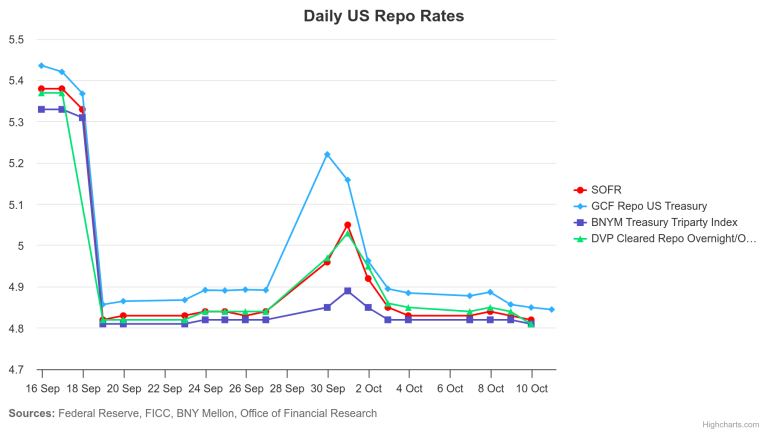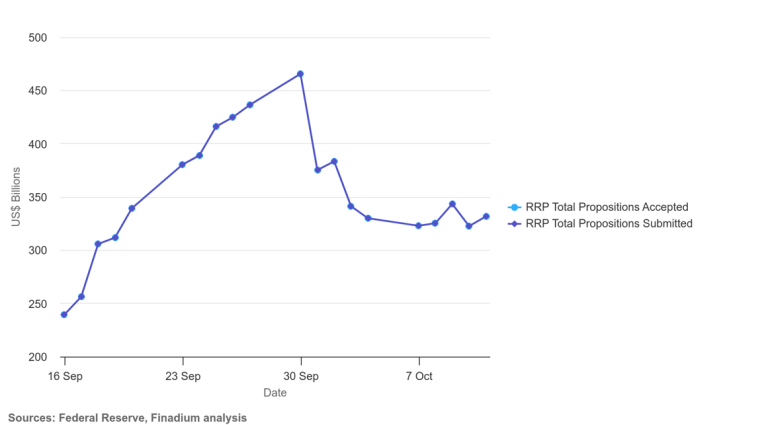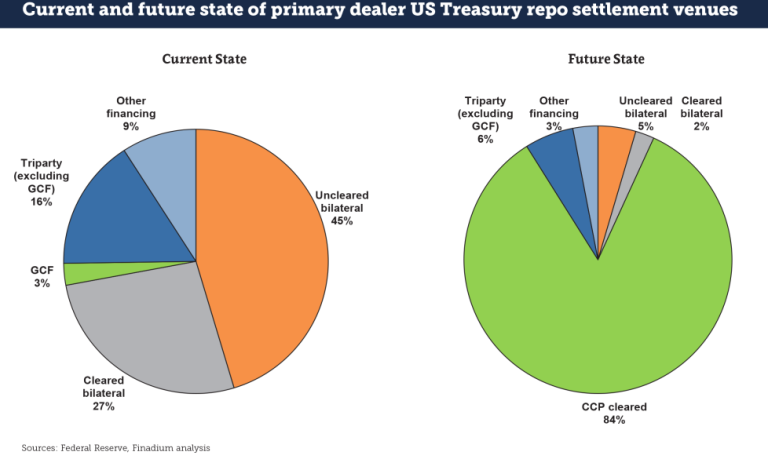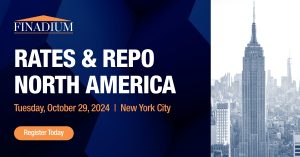Finadium’s Rates & Repo North America is coming up on October 29 in New York, and we’re highlighting a few early insights as a sneak preview. In the third of a series of four articles, we hear from Federated Hermes about what market conditions money market funds are paying attention to, and consider the larger data-driven strategies being deployed to manage the dynamic economic and operational backdrop with EquiLend providing some lessons from seclending.
The repo market has shown recent signs of stress, and participants should be paying attention to funding pressures as the Federal Reserve decides the path forward of its quantitative tightening (QT) program, said Sue Hill, head of the Government Liquidity Group, senior portfolio manager, and senior vice president at Federated Hermes, who will be speaking on the Market Conditions in US Repo panel.
“We’ve seen pressure in the repo markets around quarter-end and although that’s not unusual, it was enough to get people’s attention,” she said, adding that a slight uptick in usage of the standing repo facility focused attention on whether market conditions might be getting closer to the point where the Fed stops QT.
“Everybody was focused on whether there will be a repeat of the September 2019 repo spike,” she said, noting that while she doesn’t believe that will happen, the shift in market dynamics could point to more significant strains in the funding market.
“We do a significant amount of repo on a daily basis, so we watch the markets quite closely (like) the uptick in SOFR [secured overnight financing rate],” she said. “It seems to have subsided by now, but it is an area of focus for us for the next several months as we try to come to grips with where our traditional repo transactions will be trading.”

From a buy-side perspective, Hill added that there is more “normalization” in the repo market over the last year, characterized by a decrease in use of the Fed’s overnight reverse repo program (RRP) and more activity with the firm’s traditional counterparties, whether on a bilateral, tri-party or sponsored repo basis.
 To identify trends and benchmark performance in the repo market, Hill noted that the Federated Hermes team uses what’s available for repo transactions from a variety of sources, such as broader enhanced disclosures stemming from SEC reporting requirements for money market funds. But the data landscape remains notoriously opaque, and post-trade data is not yet a common term.
To identify trends and benchmark performance in the repo market, Hill noted that the Federated Hermes team uses what’s available for repo transactions from a variety of sources, such as broader enhanced disclosures stemming from SEC reporting requirements for money market funds. But the data landscape remains notoriously opaque, and post-trade data is not yet a common term.
SFT data and tech
Currently, securities financing market participants as a whole are steeped in analysis across trading, settlement efficiency and optimizations to keep up with dynamic market conditions and regulations. Only one thing seems certain: there will be a need to make more common use of quality data for decision-making.
The repo rates environment is becoming more closely aligned with post-trade data, especially as regulatory pressures are building in the run-up to mandatory US Treasury repo clearing, said Josh Galper, managing principal at Finadium. If FICC offers several different popular repo clearing services (Sponsored, Agent, GCF), then the market will want to see how it is priced on each one.

The more that repo markets go inevitably electronic and STP, the more standardized data can be expected to be available. Regulatory data meanwhile is becoming more useful, with the Securities Financing Transactions Regulation (SFTR) serving as a case in point at a time when sophisticated technologies such as artificial intelligence can be deployed to better clean up and sift through messy datasets.

Securities Lending PoV
Everyone is a consumer in some way of data relating to what’s happened after a trade is done, said Gabi Mantle, global head of Post-Trade Solutions at EquiLend, who will be speaking on the Advances in post-trade, triparty and collateral panel. In securities lending, for example, post-trade data has become particularly pertinent for collateral management operations.
“Post-trade data is a very powerful commodity…Funding desks need to know what collateral they need (and) that data is driving all of those decisions and all of that activity around funding,” she said. “And better clarity, better data will lead to more optimal collateral decisions.”
Collateral optimization as part of trading decisions has long been a topic for the large primes, largely because they can afford the technology spend and to set up funding desks or internal optimization groups. But there’s now also growing interest from smaller houses, which have historically been reactive, said Mantle.
 “From an EquiLend perspective, we are getting questions from the more mid-tier and lower sized funds (on) how can we help them in that optimization space,” she said. “Collateralization and funding is all going to be under even more scrutiny and more pressure in a T+1 environment (and) there has been an element of optimization in front office for many years, but it’s really starting to be important to all firms, all sizes.”
“From an EquiLend perspective, we are getting questions from the more mid-tier and lower sized funds (on) how can we help them in that optimization space,” she said. “Collateralization and funding is all going to be under even more scrutiny and more pressure in a T+1 environment (and) there has been an element of optimization in front office for many years, but it’s really starting to be important to all firms, all sizes.”
That includes operations teams, who are looking at post-trade data for settlement fails to improve decision making on investing resources to improve fail rates, or reconciling differences when they come up with counterparties, such as booked rates.
“This becomes fundamental both to the operations teams in being able to understand where they need to dedicate some work (and) resourcing to clear some of these differences, but also from a front office perspective because they are reliant on having those trades aligned between the two counterparties,” she said.
Sue will be joining colleagues from Bank of America, BNY Markets, and Hudson River Trading on the Market Conditions in US Repo panel, and Gabi will be on the Advances in post-trade, triparty and collateral panel along with experts from BNY, Euroclear, ISDA, J.P. Morgan, LSEG Post Trade, and Transcend.
Rates & Repo North America is a conference for cash investors, dealers, market intermediaries, technology firms and other service providers. Register here for the October 29 in-person panel discussions.


